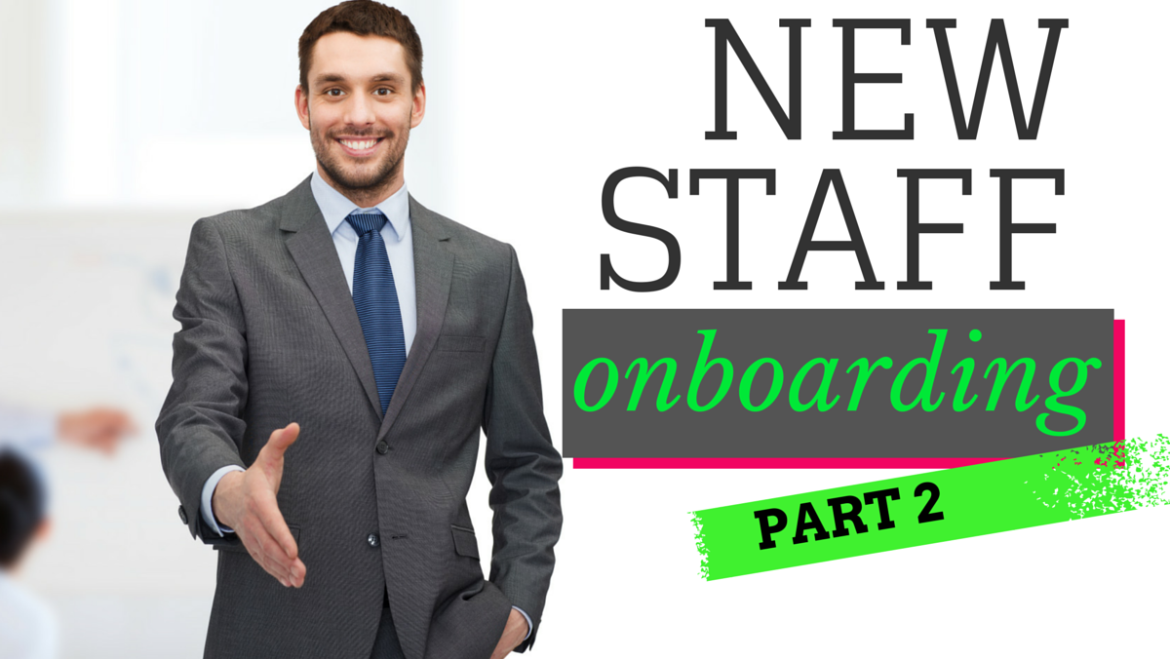New Hire Onboarding Process – Part 2
- Claire Hauser
- December 10, 2014
- 0 Comments

This great article follows on from our first 3 articles “3 Must do Tips for Onboarding a New Employee” “10 Top Tips for a Great First Day” and “New Hire Onboarding Process- Part 1”.
Planned onboarding programmes will minimize the typical ‘6 month to 1 year’ window when employees are still finding their feet, and make you more profitable and your new hire feel more confident. Without planned structure and content, onboarding can actually have the complete opposite effect and prolong the confusion! This series aims to give you a clear guide to cover off on all the relevant info in a logical way.
With the funnel approach discussed in part 1, you will start at the highest level – the company.
During onboarding, one of your key objectives is to positively reinforce the person’s decision about joining your company. So emphasize all your company’s successes, keep the information light and relevant. And share your challenges, making the person feel trusted and part of the team. This is actually a great opportunity for your new employee to engage with the most senior person at your company – the CEO, Business Owner or a Director. Often hearing all about the business from the person with the greatest vision is a very special opportunity. Depending on your business, this new employee might not interact at this senior level once they are settled in the company so this is a nifty way of helping them connect to the heart and soul.
The Company
Start with your company basics:
- History of the company
- Successes and achievements
- Who is our customer and why do they love us?
- Any key partners/suppliers?
- Current strategy for the business
- Current market challenges or threats
- Challenges that the business faces in the long term
- Key competitors and where each sits in the market and why
- Simplify how the business makes money and where it spends its money
- Identify key departments and people within the organization – go through an organogam if you have one.
- Discuss growth opportunities for the business and highlight key goals for the next financial year.
Departments
After the discussion with the Owner/Director, your programme will move down the funnel to the various department overviews. The trainer from each department will follow a similar funnel approach. Remember, this follows those initial meetings (see part 1) you held with the trainer from each department, getting them onboard with your induction plan. Here’s what you want them to cover:
- What is the role of your department/team?
- A SWOT of the team/department at a high level
- Who does what in your team?
- If this team/department wasn’t here, what would happen to the business?
- How do our departments interact?
- What are the top 3 goals for your team this year?
- Finish with a personal introduction of everyone in that team
Remember to encourage supporting documentation – organogram of the team, definitions, strategy documents.
The New Employee’s Actual Role
High-level overview
Finally the new employee’s actual role. This is where they will learn about what they are expected to do and, very often the syllabus becomes a compass and a safety blanket for the new recruit. How? Well, as they can tick off each thing they have learnt, they will feel more comfortable and confident. It is a measure, a benchmarker and provides clear direction for that person in a time when they typically feel lost.
As their manager, you should start off this set of sessions with the high-level information about their role:
- What are the key objectives expected of you overall in the long term?
- What are the timeframes?
- What are the key objectives expected of you overall in the short term?
- What are the timeframes?
- How will we measure performance against these objectives?
- What are the consequences for the business of these not being met?
- What are the challenges associated with these objectives?
- Advice of how to tackle these challenges.
- How to ask for help, budget, resources etc.
- Explain how you are as a manager and how best you can work together eg should they cc you in every email? How often will you meet with them? etc
Strategy and Task Specifics
Now they need the specifics of each aspect the job requires fulfilled. Follow the same formula. This is where the onboarding syllabus will obviously vary for the type of role. ie Some roles or areas within roles are less task oriented and so will focus more on strategy, challenges, opportunities and proposals rather than actual tasks. And you will likely repeat this set of questions many times – for as many different tasks/areas that the role covers. eg if this person was responsible for your digital marketing, you would have this set of questions many times for each: email marketing, social media, paid search, organic search etc. Or you could choose to structure it as acquisition versus retention……the point being, to structure the content to best reflect your priorities and clearly outline what is expected of them.
- How does this area of my role tie into the strategy of the business?
- What are our specific goals?
- What are the time frames associated to this?
- What are the exact steps that need to be followed to complete the task?
- How will I know that the job is completed successfully?
- What are the typical things that can go wrong and how to troubleshoot?
- What kind of reporting is required, in what format, how frequently and who should receive it?
It is probably also important, depending on the role, to point out that this is their base learning- But that you understand that they may want to change things as they learn and experience the role.
Keep an eye out for the last article in the series with great tips on how to consolidate their learning and ensure they are ready to tackle anything!
I’ve spent the last 10 years working in digital marketing and ecommerce. I’ve been the agency, the client, and lectured and trained 1000’s of people. I have a passion for training and development, smart, simple marketing...and running and wine...not at the same time :)

